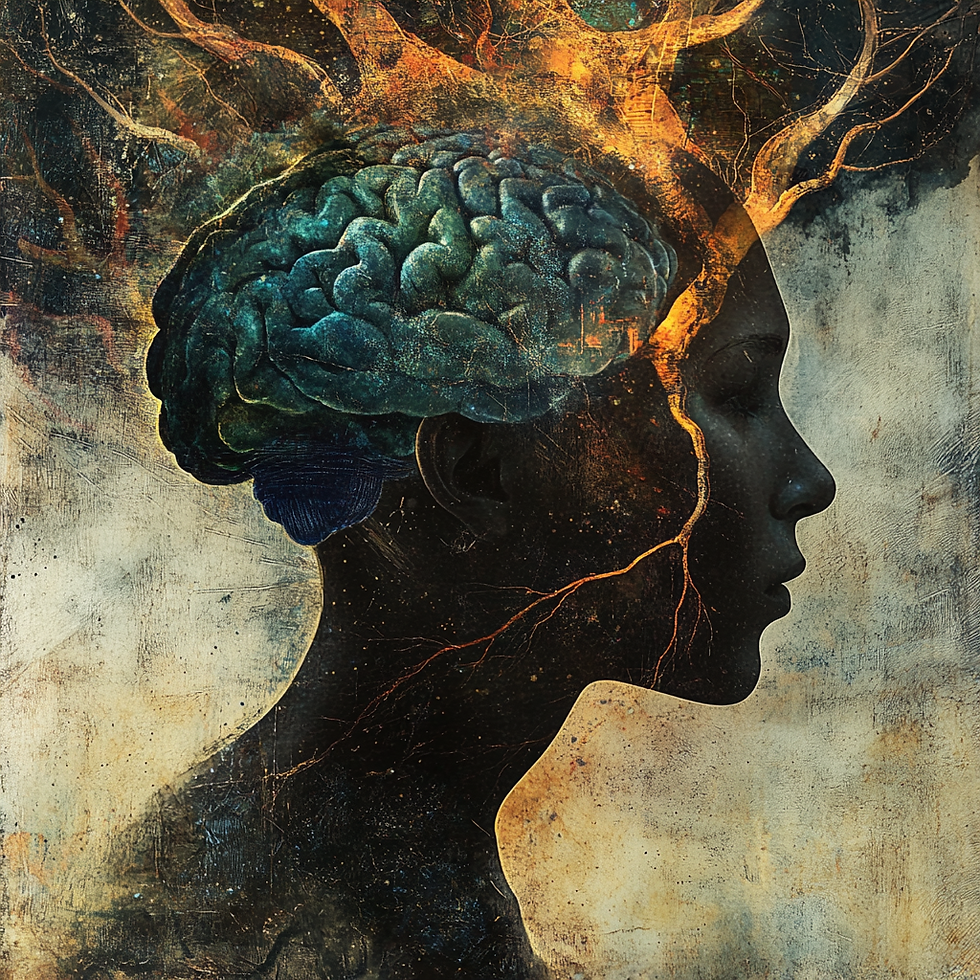Flashbacks, Nightmares, and Triggers: How PTSD Shows Up
- Laura Kuhn

- May 22
- 3 min read

Post-Traumatic Stress Disorder (PTSD) isn’t just something that lives in the past—it continues to affect daily life, often in sudden, confusing, and distressing ways. For people living with PTSD, the trauma may be over, but the body and mind haven’t gotten the message.
Flashbacks, nightmares, and emotional triggers are some of the most common—and misunderstood—ways PTSD shows up. Understanding these symptoms is a powerful step toward healing, empathy, and reclaiming a sense of safety.
What Is PTSD?
PTSD is a mental health condition that can develop after experiencing or witnessing a traumatic event. This might include physical or sexual violence, a serious accident, combat, emotional abuse, natural disasters, or any experience where your sense of safety and control was shattered.
PTSD symptoms fall into four main categories:
Intrusion (e.g., flashbacks, nightmares)
Avoidance (e.g., avoiding reminders or thoughts of the trauma)
Negative changes in mood and thinking (e.g., guilt, shame, numbness)
Changes in physical and emotional reactivity (e.g., being easily startled, angry outbursts)
Flashbacks: Reliving the Trauma
A flashback is more than a bad memory—it’s the feeling of being pulled back into the traumatic event, as if it’s happening right now. During a flashback, the brain’s “danger system” becomes activated, and it can be difficult to distinguish the past from the present.
You might:
See vivid images or hear sounds from the trauma
Feel physical sensations (like pain, pressure, or panic)
Lose awareness of your surroundings or feel dissociated
Flashbacks are your brain’s way of trying to process trauma—but without the tools to safely do so, they become overwhelming.
Nightmares: Trauma in Your Sleep
Nightmares related to PTSD often repeat aspects of the trauma or carry similar themes—like helplessness, fear, or threat. They can be:
Literal replays of the traumatic event
Symbolic dreams with intense emotions
Disruptive to sleep, leading to exhaustion and anxiety
Over time, fear of sleeping or chronic nightmares can lead to insomnia, which worsens mental and emotional health.
Triggers: The Invisible Tripwires
Triggers are reminders—sometimes obvious, sometimes subtle—that bring up the emotions or sensations of the trauma. They can be:
Sensory (a smell, sound, or visual cue)
Emotional (feeling rejected, powerless, or trapped)
Situational (anniversaries, crowds, authority figures)
You may not always know why a certain experience triggers you, which can create confusion or shame. But triggers aren’t irrational—they’re deeply tied to how your nervous system was shaped by trauma.
How PTSD Affects Daily Life
These symptoms can impact:
Relationships (difficulty trusting, withdrawing, lashing out)
Work or school (trouble concentrating, avoiding certain environments)
Physical health (chronic pain, fatigue, hypervigilance)
Emotional well-being (shame, fear, hopelessness)
But PTSD isn’t a life sentence—and you’re not alone in the way it shows up.
What Can Help
PTSD is treatable, and many people find relief with trauma-informed care. Common therapeutic approaches include:
EMDR (Eye Movement Desensitization and Reprocessing)
Somatic Experiencing
Trauma-focused CBT (Cognitive Behavioral Therapy)
Internal Family Systems (IFS)
Mindfulness and grounding techniques
Therapy provides a safe space to process the trauma, learn emotional regulation, and begin to reconnect with a sense of safety in your body and your life.
Final Thought
Flashbacks, nightmares, and triggers aren’t signs of weakness—they’re signs of a nervous system trying to make sense of the unspeakable. Healing from PTSD takes time, compassion, and support—but it is possible. You don’t have to keep reliving the past to survive it.
If PTSD symptoms are interfering with your life, therapy can help you understand what’s happening in your brain and body—and guide you toward relief, resilience, and recovery.



Comments